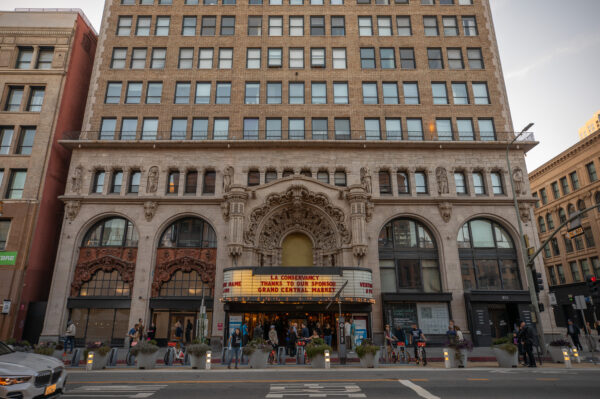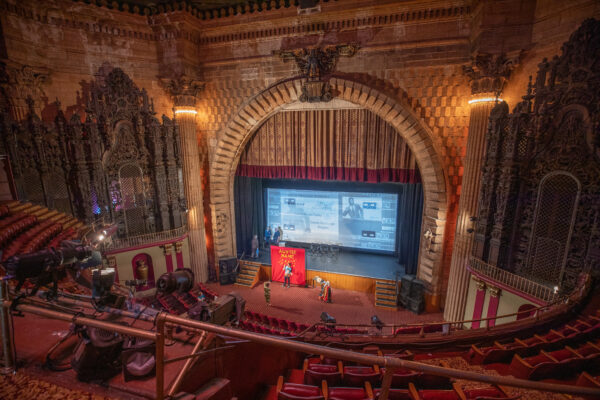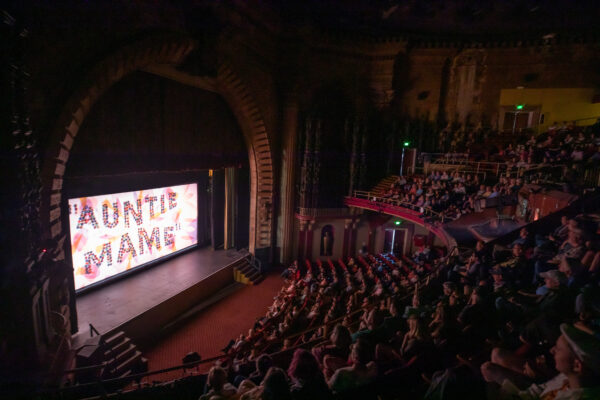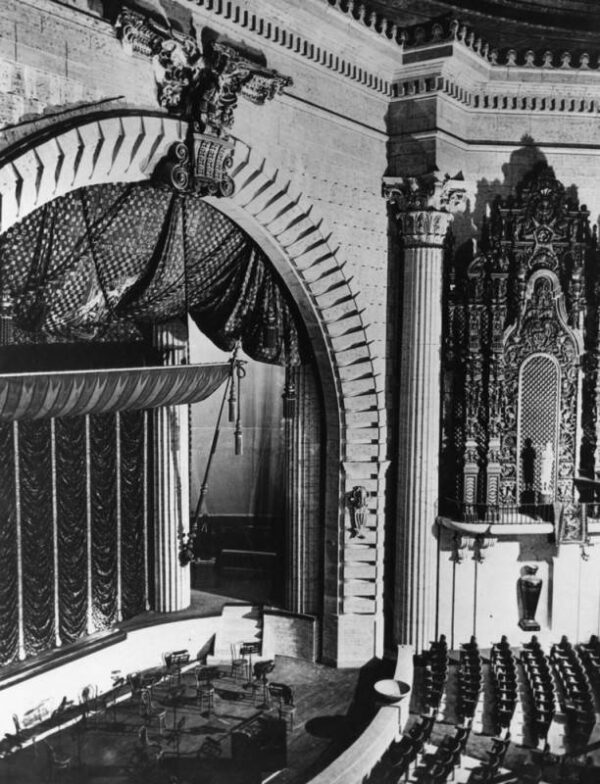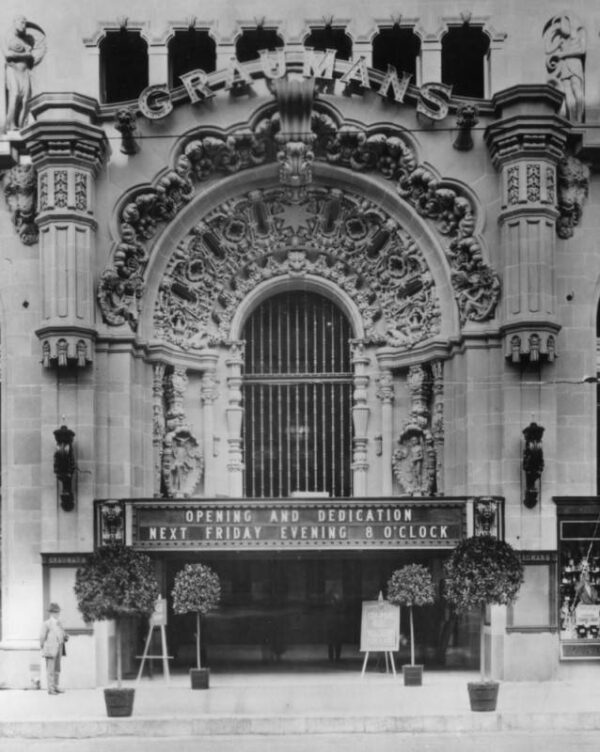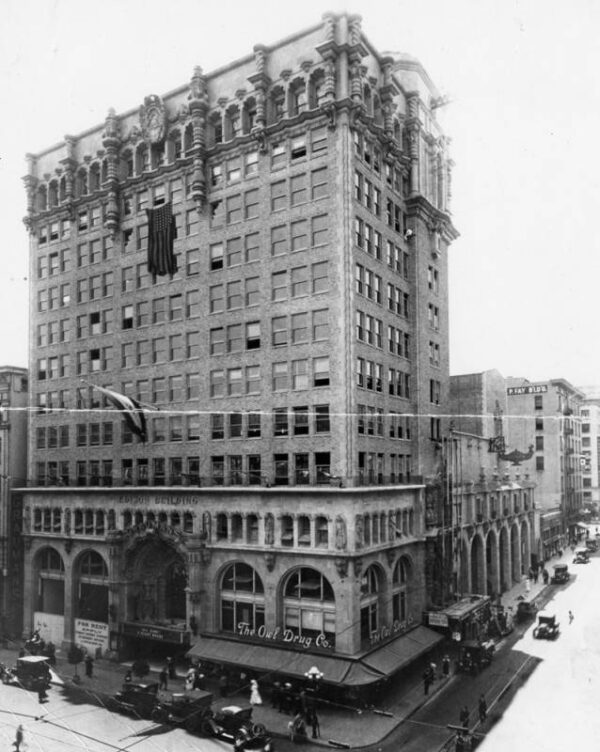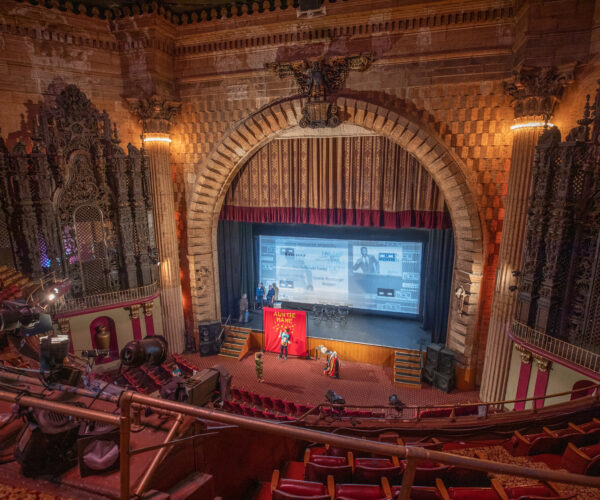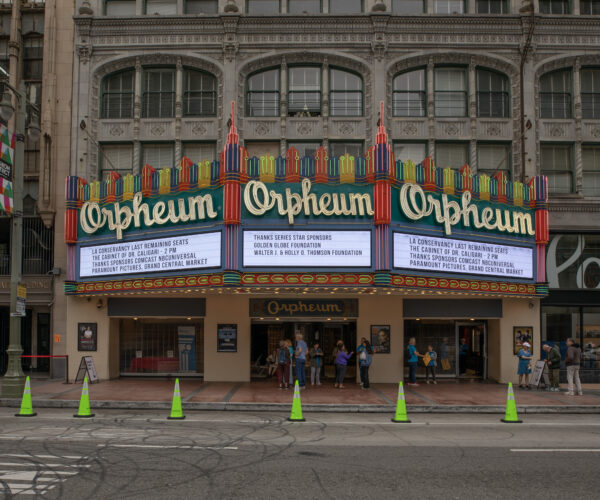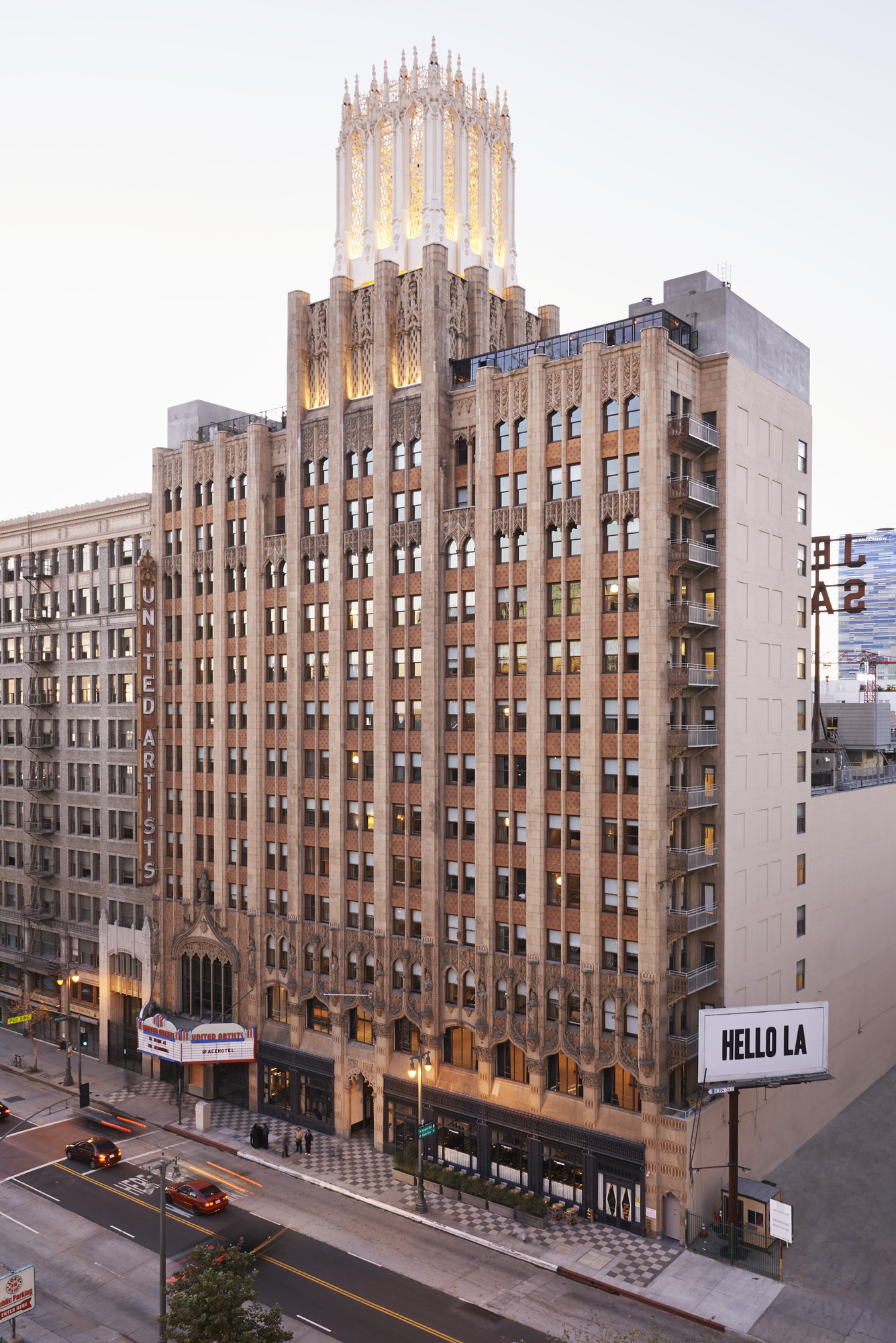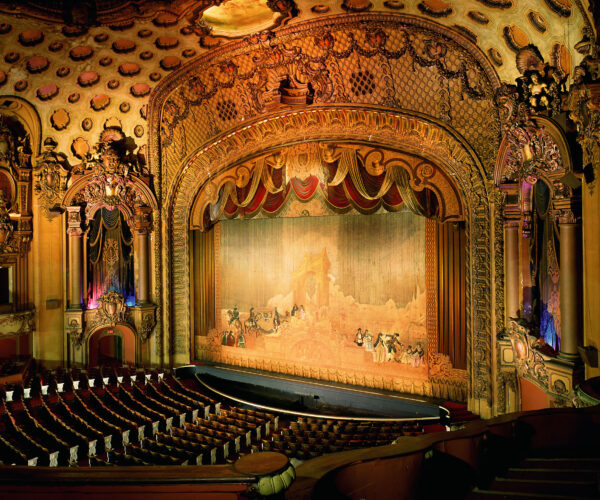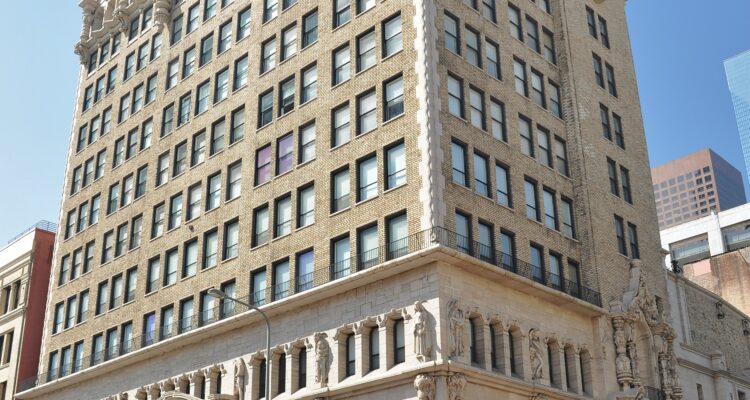
Place
Million Dollar Theatre
Created for theatre impresario Sid Grauman as his first Los Angeles venue, the 1918 Million Dollar Theatre was one of the earliest and largest movie palaces in the country, boasting 2,345 seats.
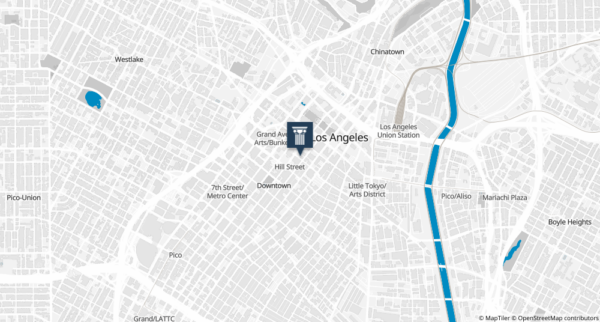
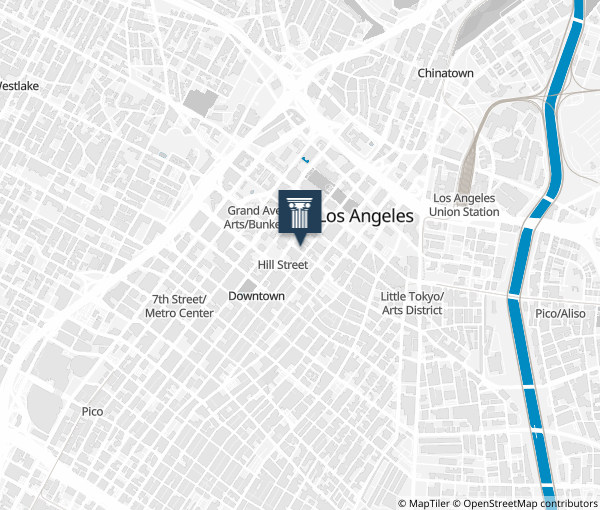
Place Details
Address
Get directions
Architects
Year
Style
Decade
Attributes
Community
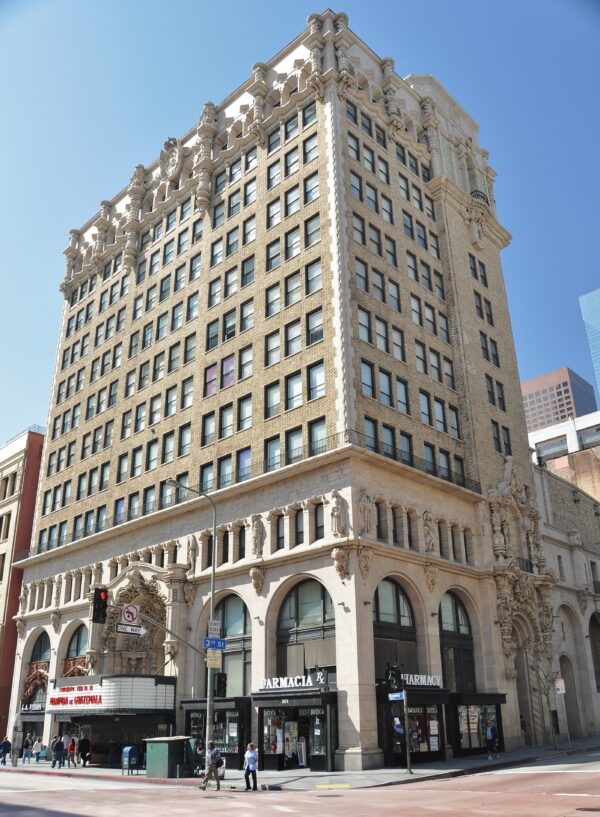
Photo by Stephen Russo
Created for theatre impresario Sid Grauman as his first Los Angeles venue, the Million Dollar was one of the earliest and largest movie palaces in the country, boasting 2,345 seats.
The theatre opened on February 1, 1918, with the premiere of The Silent Man, accompanied by a thirty-piece orchestra. Guests included Douglas Fairbanks Sr., Mary Pickford, and Charlie Chaplin.
The twelve-story building was designed by Albert C. Martin Sr., one of the most important architects in Los Angeles at the time and the founder of one of the city’s most prominent architectural firms. The exterior exemplifies the elaborate Churrigueresque (chur-rig-ur-esk) style, named after 18th-century Spanish church architect and sculptor José de Churriguera, whose designs favored this type of architectural embellishment.
Joseph Mora, son of the renowned Spanish sculptor Domingo Mora, designed the theatre’s façade, which features bison heads, longhorn steer skulls, allegorical figures representing the arts, and even girls perched on ledges strumming stringed instruments, their legs dangling above the street. The large, scalloped arch over the entrance once framed a stained-glass window, now plastered over.
Noted theatre architect William Lee Woollett designed the theatre’s interior. Many of its decorative elements were inspired by the 1841 English fairy tale The King of the Golden River by John Ruskin. The organ grilles, in particular, showcase imagery from the book, including the evil brothers, the Golden Tankard, the South West Wind, and even the dog from the story.
Hanging from the coffered dome ceiling is a chandelier that once adorned the lobby of Woollett’s now-demolished Metropolitan Theatre at Sixth and Hill Streets.
The massive 110-foot-wide balcony in the auditorium was a feat of engineering. It was supported by the world’s first reinforced concrete girder, developed due to a shortage of structural steel during World War I. Permits were withheld until a stress test proved its strength. With 1.5 million pounds of sandbags piled across the span, the girder passed the test.
In the 1940s, the theatre hosted jazz and big band stars such as Billie Holiday, Artie Shaw, and Lionel Hampton. By the 1950s, the Million Dollar became the first theatre on Broadway to feature Spanish-language variety shows (variedades), including headline acts from Mexico City and Latin America. For decades, it remained a leading Latinx entertainment venue, showcasing variedades and Mexican film premieres.
The lobby has been dramatically altered—its ceiling was lowered, and its walls were covered. However, much of the original ceiling and murals (also depicting The King of the Golden River) remain intact behind the drop ceiling and walls.
After serving as a church, the Million Dollar closed to the public. It reopened for performances and special events in 2008, following a year-long refurbishment, and now serves as an event and filming location.
The Conservancy does not own or operate the Million Dollar Theatre. For any requests, please contact the Million Dollar Theatre directly at (213) 359-6007.
